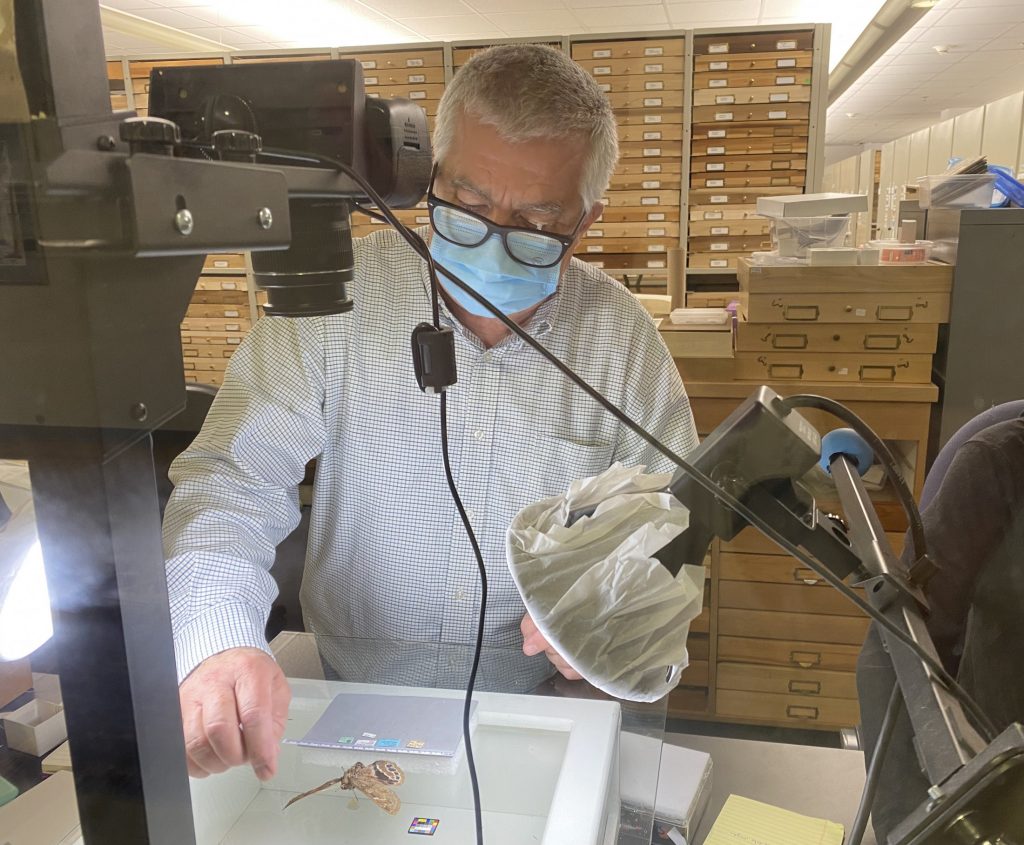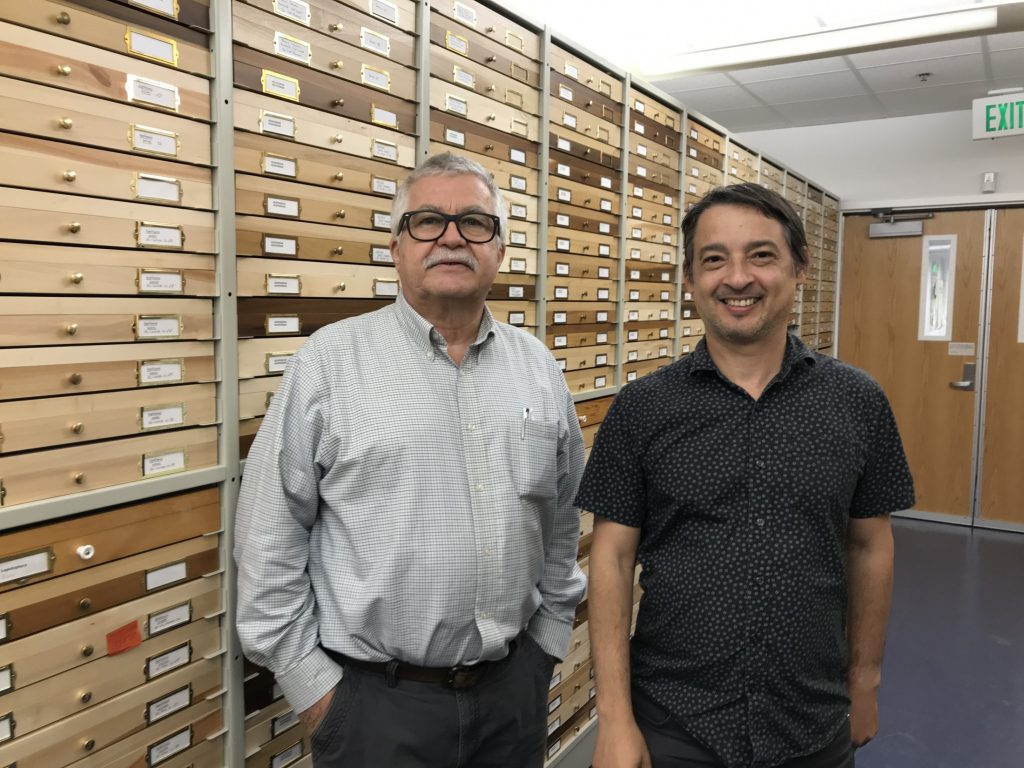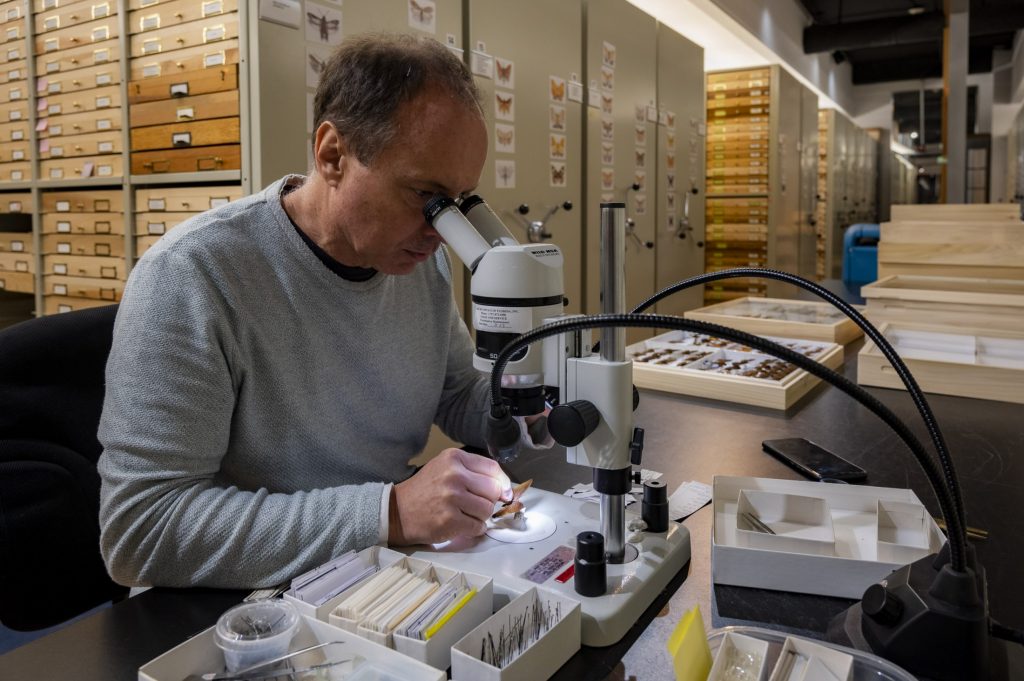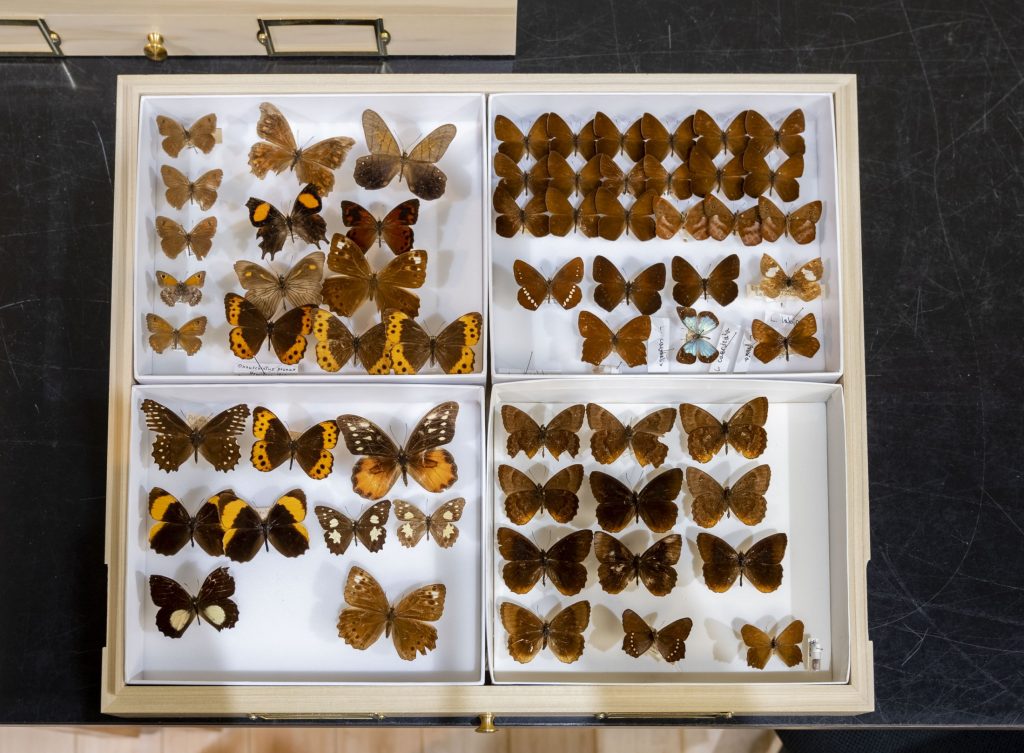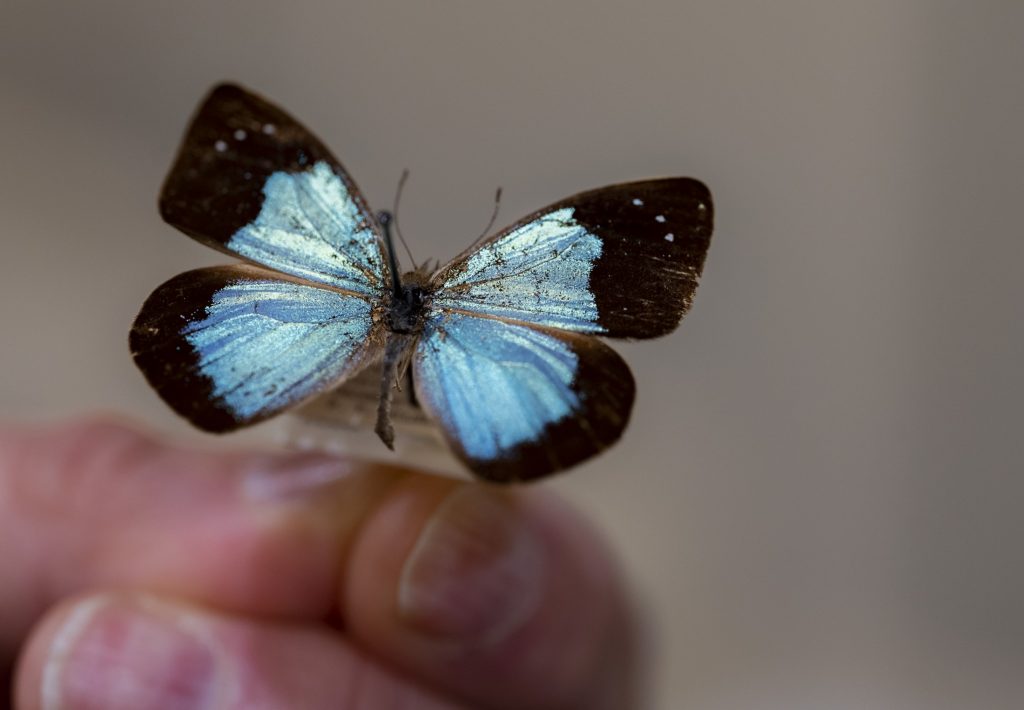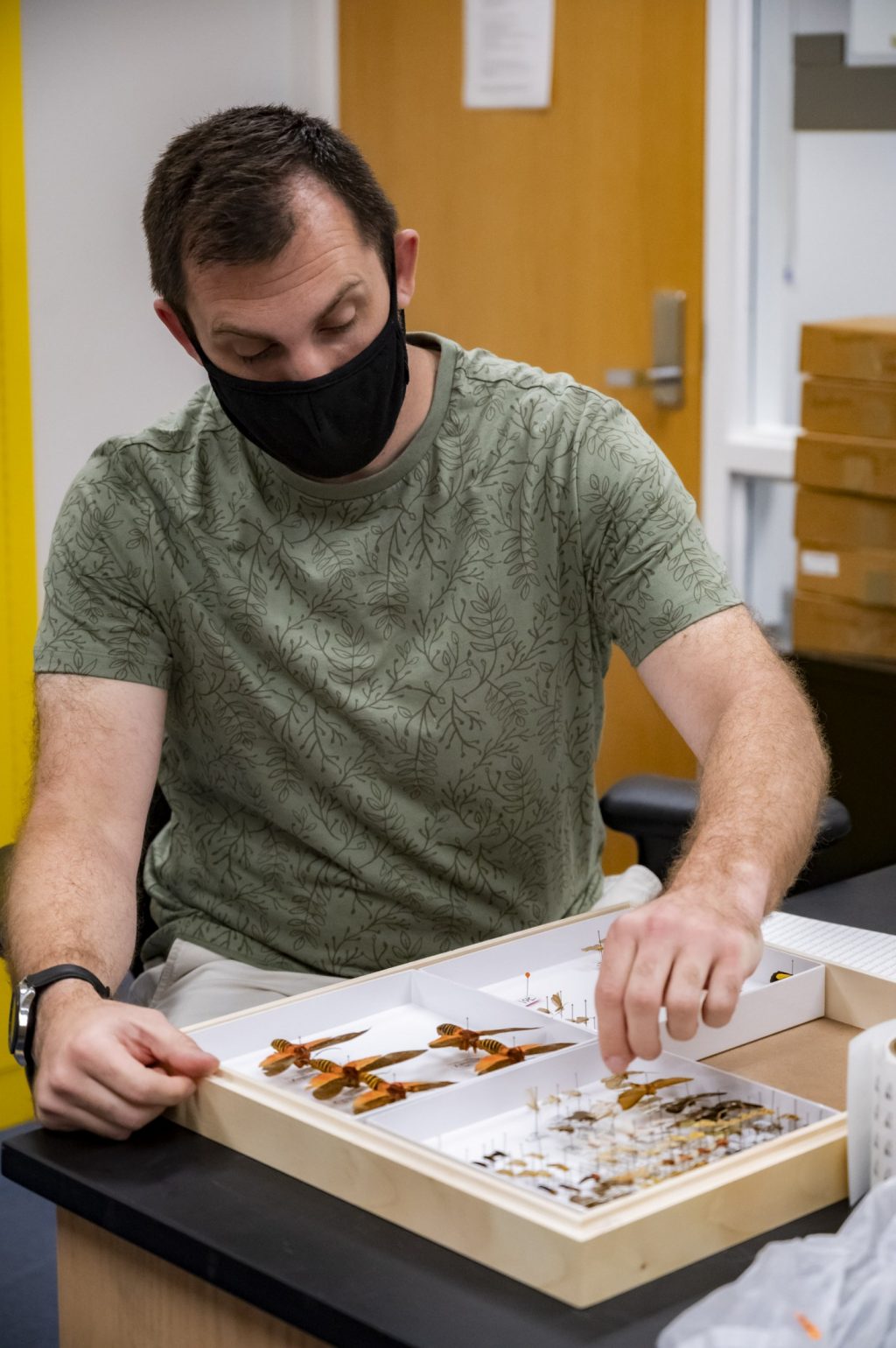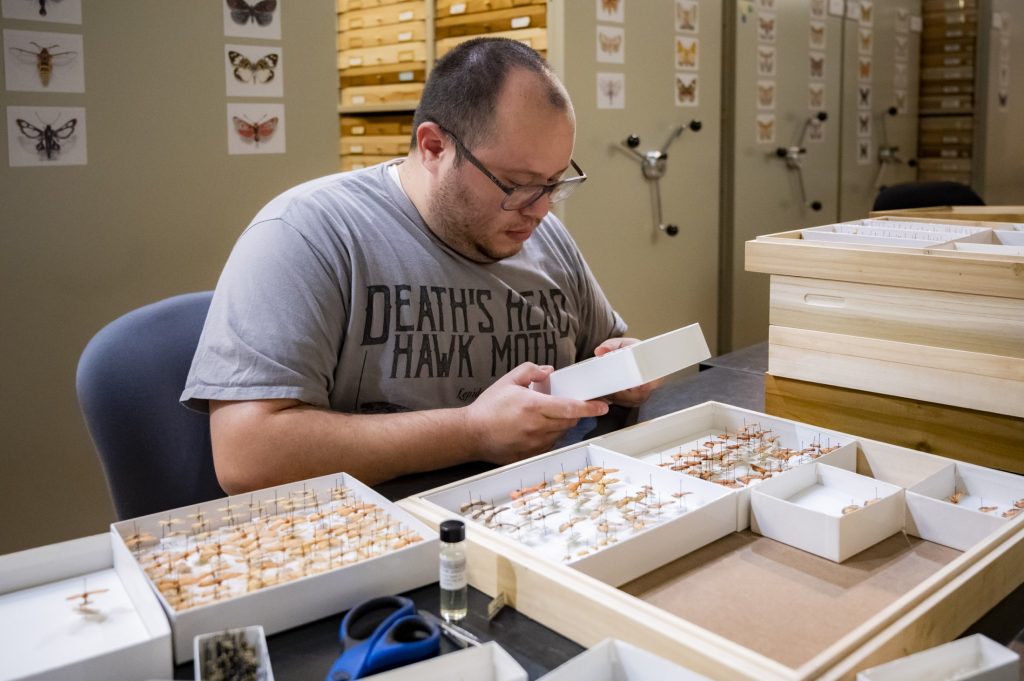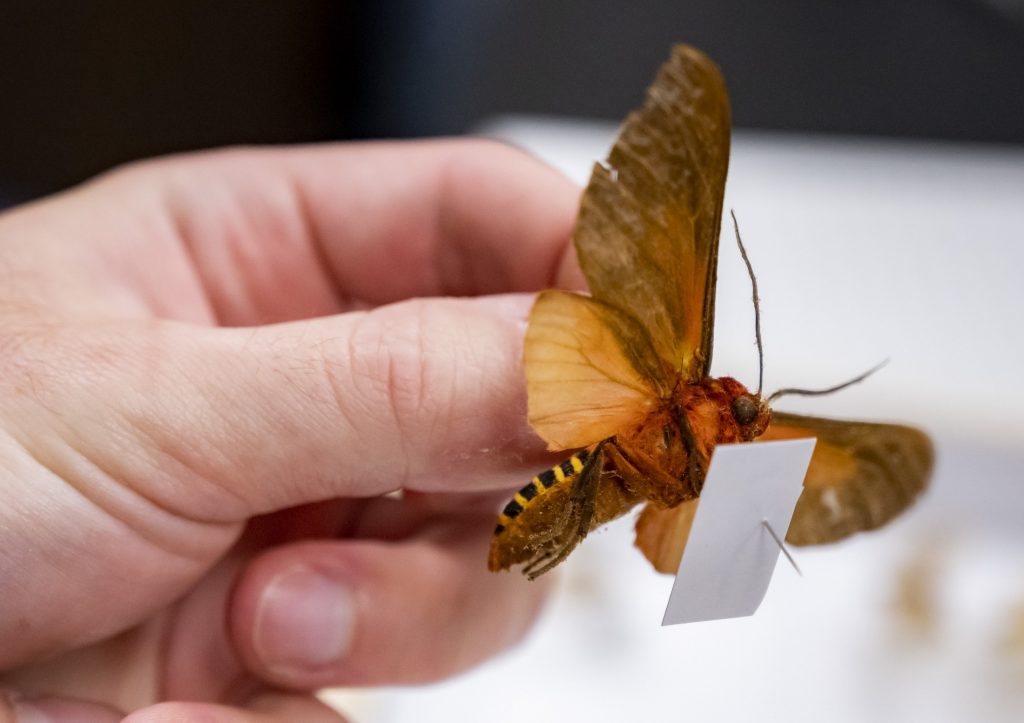Early in 2022, the McGuire Center for Lepidoptera and Biodiversity launched its first travel award program for visiting researchers. A total of eight experts from multiple countries were awarded funds last year, which enabled them to examine the Center’s collection in person and work with staff and students. In return, researchers donated their time and expertise toward the identification, organization and digitization of specimens.
“There are large parts of the collection that don’t have researchers actively studying them. So for us, having experts come in and work directly with these specimens is invaluable,” said Keith Willmott, curator and director of the McGuire Center.
The center is home to more than 10 million moth and butterfly specimens, each of which contains a story that has, at best, only been partially told. The patterns of their wings, the shape of their bodies, the spooled strands of DNA within their cells, even the bacteria in their gut all hold clues as to where and how specimens lived and evolved.
For researchers like Jorge González, who received one of last year’s travel awards and visited in October, collections like these are the foundation of modern biological research.
“A good part of our planet’s biodiversity is preserved in museums,” he said. “We know what we had in the past, and we know what we have today thanks to their collections. They’re libraries of the natural world.”
González has a special connection to the McGuire Center. He first became fascinated with insects as an undergraduate student in Venezuela, where he decided to study moths in the family Castniidae. There are only a few hundred castniid moth species and far fewer researchers who study them. Lee and Jacqueline Miller were two such researchers when González was a student, and the trio went on to develope a lifelong collaboration. At the time, the Millers worked at the Allyn Museum in Sarasota, Florida, and he remembers when their specimens were donated to the Florida Museum of Natural History.
“The nucleus of the McGuire Center is composed of collections from the Allyn Museum, which was basically made by Lee and Jackie Miller,” he said.
The McGuire Center has welcomed many visiting researchers since its opening in 2004. Such visits, however, were contingent on grant or institutional funding. Over the last two decades, the center has ballooned in size and now holds the world’s largest university-based Lepidoptera collection. Even with a cadre of curators, managers, students and volunteers, the collection requires an infusion of outside expertise to be used to its fullest potential.
Florida Museum photo by Kristen Grace
There are also an inordinately large number of moth and butterfly species — roughly 180,000 discovered so far — and many of them are incredibly rare and understudied. Most researchers choose to winnow that number down by learning all there is to know about a specific group.
“There are only a few specialists in the world for some moth and butterfly groups,” said Willmott. “In such cases, these few individuals are the only ones who can accurately and reliably identify and recognize the significance of the specimens that fall within their area of expertise.”
Tomasz Pyrcz, a professor of biology at Jagiellonian University in Kraków, Poland, specializes in Pronophilina, large butterflies with muted brown wings that occur in montane and temperate regions of Central and South America. As part of his visit to the McGuire Center, Pyrcz helped curate the McGuire Center’s Pronophilina specimens. By quickly glancing at butterflies that could pass as identical twins to a casual onlooker, he can immediately pick out the subtle differences that distinguish them.
“I’ve wanted to come here for a long time,” Pyrcz said. “It’s been very productive. In the space of a couple of days, I’ve discovered four or five new species.”
Pyrcz spends much of his time trying to determine where butterflies are the most diverse, and like many other biologists, he collects this information firsthand. He works as a butterfly census-taker in regions of the world that contain few human inhabitants, such as the high-elevation Andes.
There, he’s described new species so bizarre, their behavior is unlike anything previously recorded. While working in the Venezuelan Andes in the early 2000s, Pyrcz and his colleagues discovered a butterfly species in which females had completely lost the ability to fly.
“Instead of investing in flight, the females invest their energy in egg-laying,” he explained. “They still have wings, but they’re very small.”
The find marked the first documented account of flightlessness in butterflies, one that might have been made sooner were females not exceptionally good at evading detection. The bottom of their wings are a dusky brown, peppered with pale spots and stripes that mimic the leaves of their host plants. When the wings are closed, the butterfly remains concealed.
“You can walk through a place where you are certain there are plenty of females and not see anything.”
But the upper side of female wings are bright gold or silver, and when they’re ready to attract a mate, they open them parallel to a stem or leaf, creating a beacon visible to nearby males.
Pyrcz notes, however, that even the most remote environments are now giving way under the pressure of deforestation and development. The current rate of extinction has outpaced the rate at which scientists are able to discover new species. In Peru, where Pyrcz conducts much of his field work, he estimates there are thousands of moth and butterfly species that have yet to be discovered.
“We’re really only just now getting to know these organisms, and before we even understand the true magnitude of their diversity, most of them will disappear.”
Nicolas Dowdy, head of zoology at the Milwaukee Public Museum who visited the McGuire Center in June, echoed this sentiment for the group of moths he specializes on.
“In the Milwaukee Museum, we have a large number of tiger moth specimens that were collected in the mid-1900s from a region of the Atlantic Rainforest in Brazil,” he said. “That area has since been developed. It’s entirely possible that some of the species that lived there have gone extinct, and the only place you’ll ever see them again is in a museum collection.”
Specimens like these are indelible records of Earth’s declining diversity and provide an intimate view of their past lives and behavior. New technology is also allowing researchers to see, and even hear, specimens of extinct and extant species in ways never before possible. Dowdy specifically focuses on tiger moths, many of which produce ultrasonic sounds that disrupt bat echolocation. During his Ph.D., he created an algorithm that can model the noise made by each moth based on the structure of the organ it used to create sound.
“Now we can just go into the collection, measure the organ, run the numbers through the model, and get an idea of what the moth may sound like without having to catch live specimens.”
In a study published just last year, researchers discovered that thousands more species than initially suspected have the ability to create ultrasonic chatter. There are some species that scientists know emit sound, but for which there is no discernible sound-producing organ. Determining how these moths communicate will require careful examination of museum specimens.
Other visiting researchers, like Roy Goff, came with the express purpose of making specimens more widely available to the public. This most often involves imaging specimens for digital curation, Willmott explained.
“Roy was here for about a month taking photographs of specimens to be used on a website showcasing the diversity of African moths,” Willmott said. “At the moment, there are very few digital resources for people working on this group.”
Funding from the visiting researcher endowment has brought in experts and students who might not have otherwise had the opportunity or resources to access the collection. Areas with the most researchers and funding opportunities rarely overlap neatly with regions that support the highest levels of moth and butterfly diversity. According to Willmott, the sort of cross-pollination facilitated by the endowment is imperative for effective research and conservation in the 21st century.
“Insects have their center of diversity in the tropics, and that’s where the least amount of work has been done,” he said. “One of our goals is to support researchers from tropical countries who will have the greatest future impact on our knowledge of tropical moths and butterflies. This endowment is a great way to do that and make headway with studying this megadiverse group of insects.”
If you’d like to help support visiting researchers at the McGuire Center, you can make a donation to the Mr. Carl Wisler and Dr. Midge Smith Visiting Researcher Endowment.
Source: Keith Willmott, kwillmott@flmnh.ufl.edu
Writer: Jerald Pinson, jpinson@flmnh.ufl.edu, 352-294-0452

